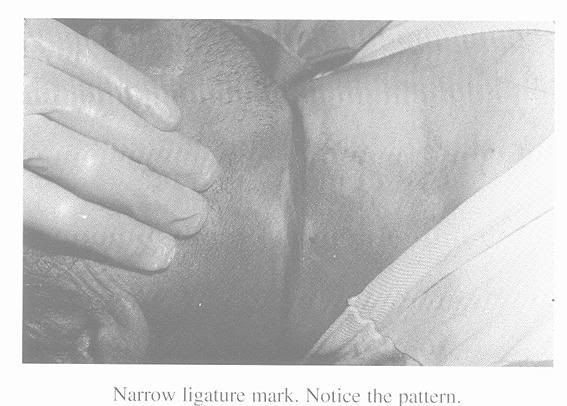Originally posted by Wickerman
View Post
What this all amounts to is that, if you see petechiae on the face or eyes of a suspected murder victim, you might have a death by strangulation (you might also have a massive cardiac arrest or cerebral hemorrhage, though, if there is no other evidence of asphyxia present). In the case of Nichols or Chapman, evidence of petechiae could help a diagnosis of cause of death. If you think that Llewellyn and/or Phillips would have identified and mentioned the presence of petechiae had they existed, well then the fact that the two doctors didn't makes the possibility of some other cause of death somewhat more likely. But only somewhat.
With respect to the damage to the laryngeal cartilage, fractures and such caused by strangulation by any means could not be disguised by a subsequent knife wound--a simple autopsy of the neck area would reveal each as a separate issue (it would also reveal a broken neck). Did the police surgeons do a neck autopsy? Based on the comments about the knife wounds given at the inquests, I assume they did. But who knows?
Although I'm sure Wickerman has explained this before, I'm wondering why he thinks that the killer would care to disguise the use of a ligature if he did resort to it as a means of incapacitating or killing any of the women.
Errata's comments on Chapman are interesting--to which I would add: (d) that whatever was done to her--strangulation, smothering, burking, sucker-punching--commenced in the passageway or landing area, after which she was carried outside the back door and set down for the mutilation. Why the killer or killers would put her down just outside the door is a good question--perhaps there was a sense of security there, where someone in the passageway could be heard, and so forth. All of the outside murders seem foolhardy to me, but the Chapman killing seems like, well, utter madness.
Personally though, I'm even more puzzled by Eddowes, who died with her bonnet still on her head. And in this case asphyxiation is less likely. It's as though she just fainted away, and the killer--gently--laid her on the ground before cutting her to pieces.
Incidently, wasn't Llewellyn a GYN by profession?


Leave a comment: